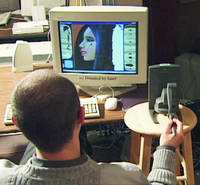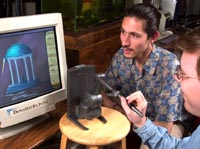DAB:
Interactive Haptic Painting with 3D Virtual Brushes
Capturing the sight, touch, action, and feeling of painting
|
Outline Paper Highlights / Abstract Images Created with DAB Screenshots Video Artists Sponsors Related Websites |
Contributors Graduate Students: William V. Baxter III Vincent Scheib Faculty: Ming C. Lin Dinesh Manocha |
Paper
Citation:
William V. Baxter, Vincent Scheib, Ming C. Lin, and Dinesh Manocha "DAB: Interactive Haptic Painting with 3D Virtual Brushes." In Eugene Fiume (ed.), Proceedings of the 28th Annual Conference on Computer Graphics and Interactive Techniques, SIGGRAPH 2001, Los Angeles, CA, August 12-17, 2001, pp. 461-468.
(BibTeX)
ACM entry
Downloads:
| DAB.pdf | 10.3 MB | Press quality |
| DAB-small.pdf | 0.3 MB | Reduced resolution images |
| DAB-slides.zip | 12.1 MB | SIGGRAPH talk slides (PowerPoint, Flash) |
| DAB-appendix.pdf | 0.1 MB | Appendix |
Highlights
AbstractMotivation:Recent advances in computer graphics have made progress with reproducing the look of painting. This project explores the benefits of recreating the "sight, touch, action and feeling" of the artistic process itself. The system, DAB, provides the user with the traditional tools of a painter. This setting, conceptually equivalent to a real world painting environment, allows anyone to control a virtual brush as he or she would a real brush. To achieve this, we have designed a physically-based, deformable, 3D brush model and bi-directional, two-layer, paint model. These allow the user to produce complex brush strokes intuitively. The haptic feedback enhances the sense of realism and provides tactile cues that enable the user to better manipulate the paintbrush. Brush Model:We model the brush head as a subdivision surface mesh wrapped around a spring-mass particle system skeleton. The particle system reproduces the basic motion and behavior of a brush head, while the deformable mesh skinned around this skeleton represents the actual shape of the head. Paint Model:Complementing our expressive brushes, we present a paint model capable of capturing complex effects interactively. Our paint model incorporates variable wetness and opacity, conservation of volume, and a hardware-accelerated bi-directional paint transfer algorithm. It supports the following operations and techniques expected from acrylic or oil painting: blending, bi-directional transfer, complex brush loading, variable dryness, glazing, and impasto. |
Haptic painting system setup, a 3D stylus and the space bar provide the simple user interface Publication photograph Uncropped, high-resolution version
A canvas and palette are provided to be worked with, as well as a rack of many brush types |
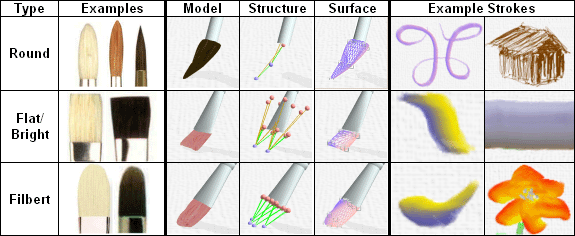
Images Created with DAB
 |
 |
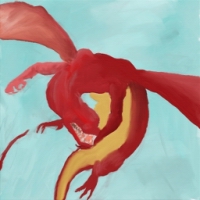 |
 |
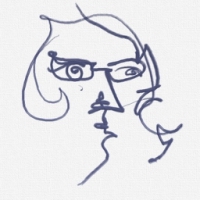 |
 |
 |
 |
 |
 |
 |
 |
 |
 |
 |
 |
 |
 |
 |
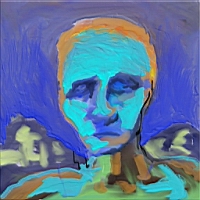 |
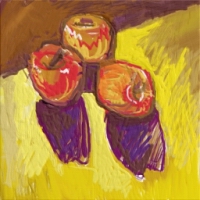 |
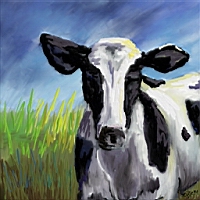 |
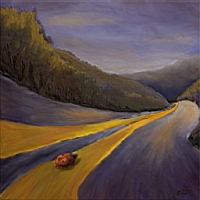 |
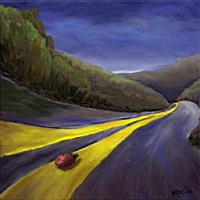 |
Screenshots
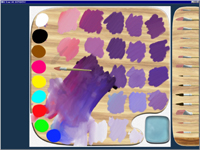 |
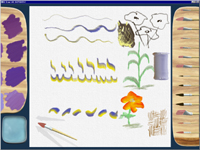 |
Video
| High quality MPEG-1 | 138.1 MB |
| Low quality MPEG-1 | 30.0 MB |
| YouTube |
Artists
Rebecca Holmberg (special thanks)
Lauren Adams
James Ball
Eriko Baxter
William V. Baxter III
Sarah Hoff
Andrei State
Research Sponsors
Army Research Office
Department of Energy ASCI Program
Intel Corporation
National Science Foundation
Office of Naval Research
Related Websites
IMPaSTo: A Realistic, Interactive Model for Paint
A Viscous Paint Model for Interactive Applications
A Versatile Interactive 3D Brush Model
inTouch: Haptic Modeling and 3D Painting
